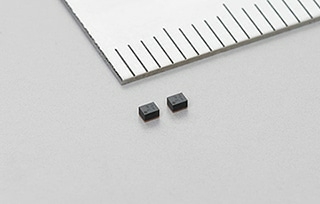source: Murata news
Murata Manufacturing Co., Ltd. has released a SAW*1 filter (1.1 x 0.9 mm) for Wi-Fi (ISM2.4GHz*2) that achieves greater steepness, insertion reduction and temperature characteristic stability compared to conventional models using the company’s new proprietary SAW technology (I.H.P. SAW*3). Mass production will begin in June 2017.
Current smartphone and tablet devices require Wi-Fi (ISM2.4GHz) functionality. Band7/30/40/41 and other LTE bands have seen increased use near the 2.4 GHz band in recent times, and with this there are increased calls for Wi-Fi (ISM2.4GHz) filters to come equipped with greater steepness and low insertion loss filter characteristics, in addition to stable temperature characteristics in order to prevent mutual interference with these LTE bands. Providing support for such was difficult with conventional SAW devices, giving competitor company filters based on BAW technology the advantage in this field.
With the application of a proprietary SAW technology (I.H.P. SAW) allowing for the transmission of SAW energy with greater efficiency, Murata has successfully developed a Wi-Fi (ISM2.4GHz) filter with characteristics (steepness, low insertion loss, temperature characteristics) notably superior to that provided by conventional BAW technology.
Features
- High-Q performance with I.H.P. SAW technology offers low insertion loss and greater steepness filter characteristics
- Superior temperature characteristics, a defining feature of I.H.P. SAW
- A flexible production system derived from the inheritance of SAW processes
Application
- Wi-Fi (ISM2.4GHz) RF circuits in mobile devices such as smartphones and tablets
Part number
- SAFQ*2G45MA0G0A series
Production
- Mass Production will begin in June 2017.
Explanation of Terms
*1 SAW : An abbreviation of Surface Acoustic Wave. SAWs are vibrations that concentrate and propagate on the surface of an object.
*2 ISM2.4GHz band : An ISM (Industry Science Medical) frequency band assigned by each country. In addition to wireless LAN (IEEE 802.11 a/b/g/n (Wi-Fi) series), this is currently widely used for Bluetooth, amateur radio, RFID and other applications.
*3 I.H.P. SAW : An abbreviation of Incredible High Performance. The proprietary SAW structure used to propagate energy in a highly efficient manner.































